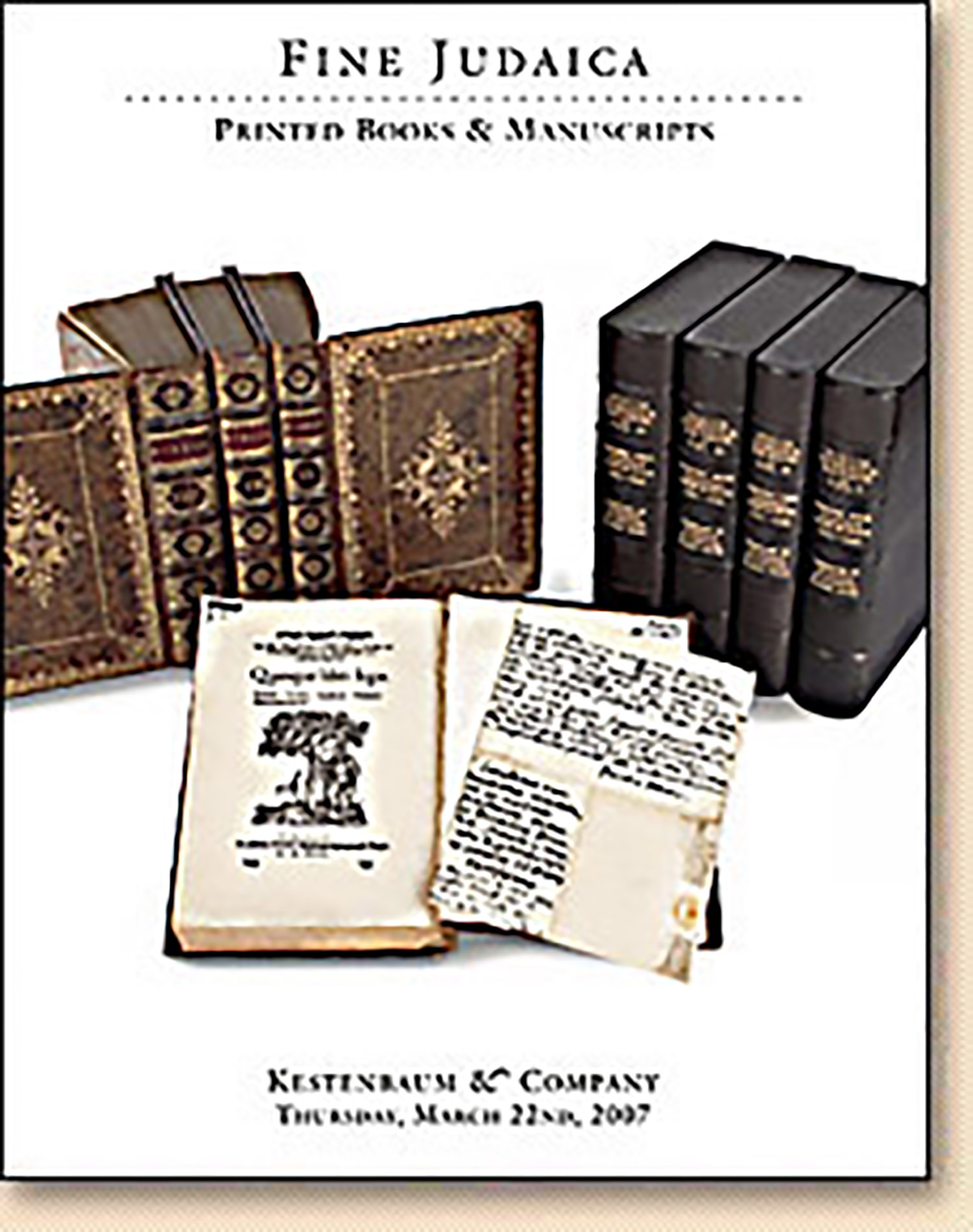Vital, Chaim. Sepher ha-Kavanoth [Book of Mystical Intentions]. Edited by Ephraim Panicheri

AUCTION 36 |
Thursday, March 22nd,
2007 at 1:00
Fine Judaica: Printed Books & Manuscripts
Lot 242
(KABBALAH).
Vital, Chaim. Sepher ha-Kavanoth [Book of Mystical Intentions]. Edited by Ephraim Panicheri
17th Century
Est: $12,000 - $15,000
Most Elegant Manuscript of Lurianic Kabbalah. “It would seem to me that this is the most elegant manuscript I have seen to date.” (Prof. Yosef Avivi).
R. Chaim Vital Calabrese (from Calabria, Italy) (1542-1620) was the preeminent disciple of R. Isaac Luria (1534-1572), who founded the so-called school of Lurianic Kabbalah in Safed in the late sixteenth century. Vital, who later relocated to Damascus, was responsible for recording for posterity the authentic teachings of the AR”I (acrostic for “ha-Eloki R. Isaac,” the Godly R. Isaac, or “Aschkenazi, R. Isaac”). These sacred manuscripts he kept to himself, not allowing others access. Legend has it that other kabbalists who were eager to avail themselves of the teachings, anxiously awaited the opportunity to surreptitiously copy the manuscripts. The opportunity presented itself during Vital’s brief illness, at which time, through the collusion of his brother R. Moses Vital, one hundred scribes pounced upon the manuscripts, each one copying a quota of six leaves. Having finished the transcription of the Lurianic corpus, the master copy was replaced to the Vital home.
That having been accomplished, it next fell to scholars to arrange in some intelligible order the raw material transcribed. Several arrangements by various editors ensued. Our own editor, R. Ephraim Panicheri, a fellow Damascene, produced three works: Sepher Derushim, Sepher Likutim, and Sepher Kavanoth. Our manuscript is Panicheri’s Sepher ha-Kavanoth.
The actual Sepher ha-Kavanoth commences on f.17r. It is preceded by minor Derushim [Sermons[ edited by Panicheri. The marginal glosses refer to the printed version of Sepher ha-Kavanoth (Venice, 1620), which implies someone cross-referenced various motifs found in Panicheri’s edition to the printed version (not by Panicheri). The collection is subdivided in two parts: Kavanoth for Weekdays and Sabbath (ff.17r.-176v.); Kavanoth for Festivals (f.177r.-258r.). See EJ, Vol. XI, cols. 572-578; Vol. XVI, cols. 171-176
From the Montefiore Collection, London, sold Sotheby’s, October 2004, Lot 399
